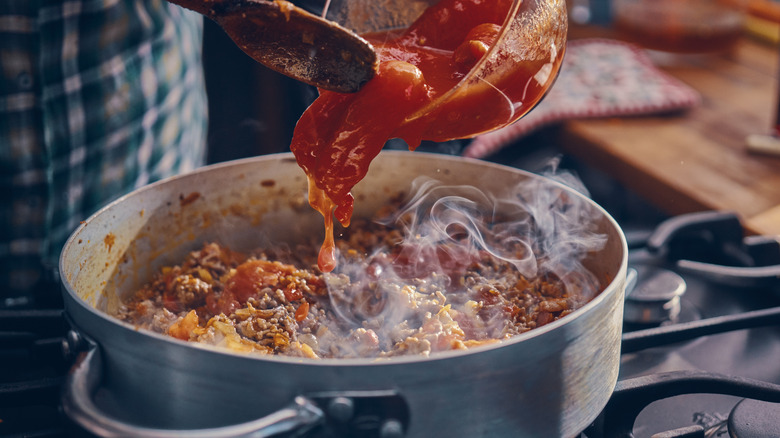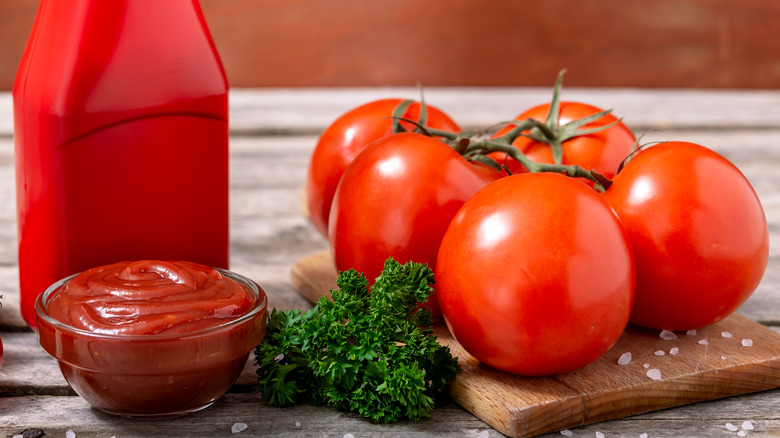Balance The Acidity Of Spaghetti Bolognese With Ketchup
A slow-cooked bolognese sauce piled high over a bowl of spaghetti with shaves of parmesan is the food equivalent of a comforting hug. But occasionally, this meaty ragu can miss the mark if your tomatoes are slightly underripe. Luckily, you can balance the acidity of a spaghetti bolognese that tastes a tad too tart by squirting some ketchup into the pan as it simmers.
Ketchup subdues the natural acidity in tomato-based dishes because it contains sugar. Used in many savory dishes to balance sour, vinegary, and bitter flavors, sugar also provides more thickness and body to sauces, lending them a richer mouthfeel. When ketchup is added to bolognese, it does three special things. Firstly, it takes the sour edge off overly tart tomatoes, whether they be of the fresh or canned variety, allowing their inherent sweeter notes to come to the fore.
Secondly, this classic sauce lends bolognese a greater depth of flavor, transforming it from lackluster to luscious, because it's essentially a concentrated burst of tomato. Tomatoes are rich in glutamic acid, which is the clever stuff that creates a meaty, umami taste on the tongue. Similar to a stock cube, ketchup adds a richer quality to the ragu, intensifies its tomatoey flavor, and tames its acidity, resulting in a satisfying and sating effect.
And finally, the thick consistency of the ketchup, which comes courtesy of the factory homogenization process it undergoes, gives bolognese an appetizing texture and color because it melds seamlessly and evenly into the meat sauce.
Add a squirt of ketchup along with your tomato paste
The amount of ketchup you add to your simmering bolognese will depend on the size of the batch you're preparing. However, it helps to add it with the canned tomatoes and tomato paste to give it the time it needs to amplify the tomatoey flavors and mitigate any acidity. The good news is that once your bolognese is cooked you can always squirt in a little more ketchup if you haven't dulled down the sour notes to your liking. Having said that, be mindful that a touch of acidity can be a welcome addition to a bolognese. This is because it cuts through the richness of ground beef, which has a high percentage of fat, and the greasiness of any pancetta that you may have included. You're not aiming for a sweet taste, just a subtle lessening of any extreme acidity.
For a lighter result with a lower fat content, you could try making turkey bolognese, which also works out cheaper than using classic ground beef. Simply add your dollop of ketchup along with your tomato puree and continue with the rest of the recipe as normal. The addition will lead to a rounder-tasting spaghetti bolognese with a satisfying thick texture and tasty balance.

